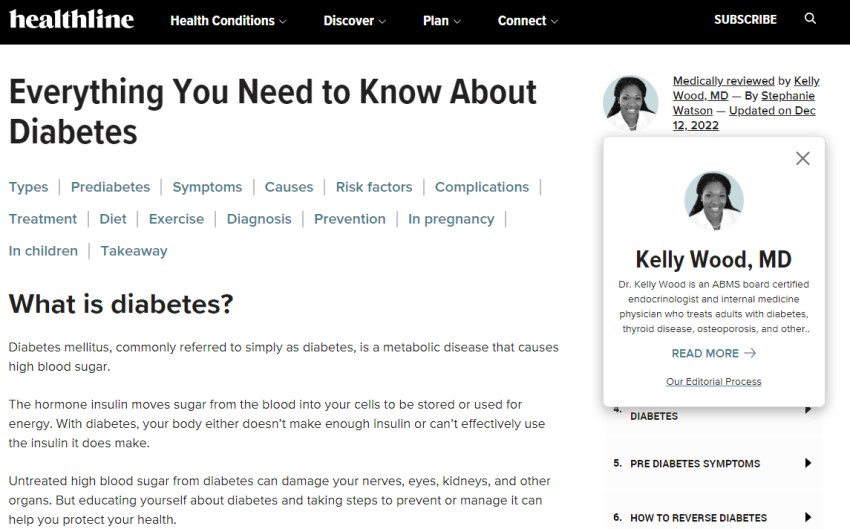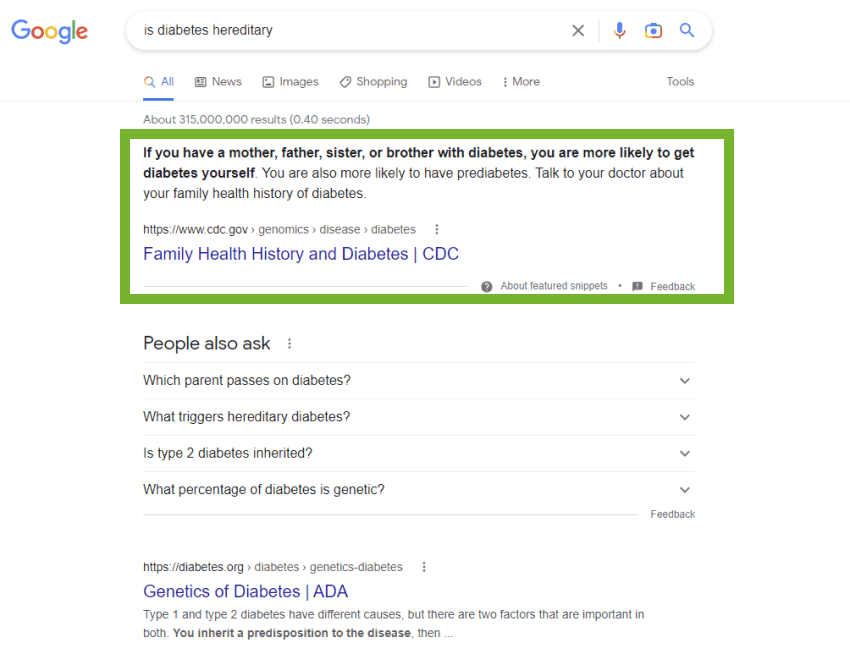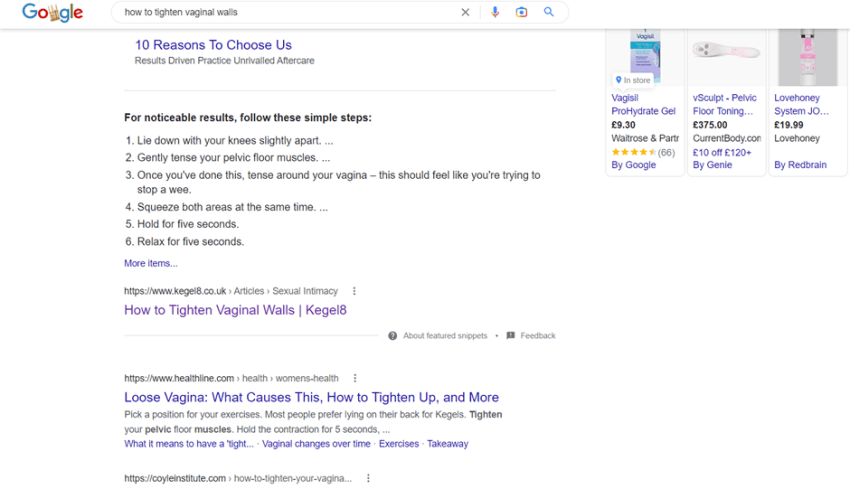You wake up one morning. You don’t feel quite right – so you bell your GP.
While nervously awaiting your consultation, your name crackles through the intercom. You go through and are greeted by a friendly doctor whose soothing yet professional tone puts you at ease.
They answer any question you have without hesitation and reassure you. “Everything is going to be fine”, they say as they outline the next steps for your next consultation.
That sounds like the perfect interaction, right? After all, first impressions are everything.
This puts copywriters in a tough spot. Not only is their medical copy up against a range of verbal and non-verbal communication techniques only available with in-person interactions, but with rival copy online too.
People don’t want to wait for appointments if they don’t have to – meaning Google is rapidly becoming the preferred port of call for medical information.
Medical content now needs to strike the balance between being informative, accurate and reassuring.
Not to mention it has to rank.
That’s a lot of boxes to tick.
So, let’s look at how you can navigate the minefield of health copy.
Step 1: Understanding Your Audience
The goal of any medical copy is not to sugar-coat the realities of medical conditions but support them through the journey.
Writing all-encompassing copy that considers facts and feelings starts with understanding your audience’s needs.
Consider these pointers before putting fingers to keyboard.
- What is your copy answering? – Make sure you’ve pinpointed what problems need your solutions and stick to that. Avoid unnecessary tangents. These only add extra stress.
- Why would someone be reading your copy? – Curiosity, fear and anxiety drive people to hit the search bar – so don’t exacerbate any negative feelings in your writing.
- What is someone looking for? – Concise answers. That’s it. They don’t want block paragraphs laden with intimidating acronyms and medical jargon. Break down your points and let them know what to do, where to go and who to talk to.
Remember, you can only write impactful copy that resonates with your audience when they’re understood.
Step 2: Make the Connection

We all experience health complications. They aren’t taboo or disgusting – they’re natural and can happen to anyone.
Medical copy must reflect this. Nobody should shy away from discussing medical issues because we’re all in the same boat.
Forming a rapport with your audience can be simple as:
- Adopting a conversational tone – A chatty aura creates an inviting atmosphere and makes content resonate with your audience. It also closes the gap between copy and in-person interactions (where people can use body language and voice intonations to change the tone of their commentary).
- Relate with them – While they don’t have to come from personal experience, anecdotes can create a safe space where no one is being judged and reinforce that they’re not alone.
- Create a persona – It can be tricky to picture a generalised audience when writing. Imagine you’re having a conversation with one person and write the piece directly for them.
Your job as a medical writer is to identify moments that could negatively impact emotions and tailor writing to counter a dip in the mood.
Take this example.
“Urinary incontinence and vaginal atrophy mean you’re suffering from a weak pelvic floor. Below are exercises you must do to prevent the problem from worsening.”
There are several issues with this opener.
Firstly, it oozes negativity and is judgmental in tone.
Secondly, considering that people are searching for clear, actionable advice, leading with medical jargon is confusing and pushes readers down a medical rabbit hole in their search for clarity – only worsening anxiety.
It also lacks reassurance and detail at a time when readers are at their most vulnerable.
So, let’s change it up.
“Leaking urine during physical activity, a reduced sensation during sex and a general “looser” feeling down there are signs you might have a weakened pelvic floor. Don’t worry. Pelvic floor weakness is incredibly common, and the symptoms can be elevated in as little as 12 weeks with these simple exercises…”
Here, we’ve identified a dip in the mood – nobody likes being told they may have a medical issue. However, in response, we’ve given the reader a light at the end of the tunnel by offering advice, a time frame for when they can either expect results or look for alternative treatment and reassurance in as few words as possible.
The best medical copy encourages people to take swift action with an anxiety-easing tone that helps them make informed choices with a cool, level head.
Step 3: Craft Your Copy
Because you’re dealing with heightened emotions and sensitive topics, language use, tone of voice and context makes or breaks your on-site copy.
When deciding how to present your information, consider these pointers:
- Avoid down-beat language – Certain language creates an aura of isolation or even blames those querying medical conditions to some degree. Terms victim, sufferer, dirty, disease, and disorder can stir unnecessary panic and even feel like a judgement. These words can have the adverse effect of making readers shy away from seeking help.
- Shorten long lists of nouns – Long, jargon-laden lists of nouns confuse understanding and lead to incorrect interpretations, so eliminate any extra fluff where possible. For example, shorten “multi-disciplinary gynaecological specialist nursing team” to ” gynaecological nursing team”. This phrasing keeps the same meaning and avoids confusion.
- Make sure it’s accessible – The aim is to leave a reader confident and informed. Drop any redundancies to keep your text as concise as possible.
- Keep readers in the loop – Medical jargon is usually the enemy of clarity in copywriting. However, sometimes it’s needed. If you need to include complex medical terms, take some time to explain what it means – a simple explanation in brackets won’t go a miss.
- Adapt your content based on the audience – Writing styles should change depending on the context or audience. For example, jargon likely won’t impact the clarity when writing for specialist audiences in complex medical whitepapers. However, writing with complicated terms makes it almost illegible for the average reader.
- Do your research – Although it goes without saying, you should always research whatever you write about. There’s an even greater responsibility to give credible advice on medical matters.
It’s also common practice to get your medical copy reviewed by a healthcare professional. Not only does this guarantee you’re giving correct advice but lets Google know that you’re credible as a source.
You can do this by simply crediting the person responsible for reviewing your writing by clearly displaying their credentials.
Healthline have brilliant examples of this – it’s not too much work to yield better results either!

You can read more about how we’ve put this into practise for our award-winning campaign with StressNoMore.
Step 4: Getting That Snippet
People nowadays are looking for instant answers to their queries. This means providing quick bites of digestible information at the touch of a finger.
People with medical queries often search with urgency, so aiming for the snippet box can drastically bump up the authority and prevalence of your content.
So, how can we optimise our content to give searchers what they’re looking for?
The Featured Snippet is that nifty little box at the top of the search results page. Google takes your question, and its clever algorithms scour millions of pieces of content to find the most direct answer from the most credible source.

How often do we ask Google questions, read the first featured result and run with that answer? All the time. So, they’re well worth focusing on.
To optimise your content for snippets, here are a few things to bear in mind:
- Slice up your content – 82% of Google’s snippets are taken from long-form prose – they love a good paragraph. By dividing up your content, you multiply your chances of being picked up by Google’s algorithm and covering more bases.
- Try a Q&A format – Answering queries in a question/answer format helps you to be more concise with your responses and provide relevant detail without the fluff.
- Keyword research – Keyword research can also be used to understand user needs. Combined with SERP (search engine results page) analysis, this information can pinpoint gaps in the content that copy can fill, and the algorithm can endorse.
- E-E-A-T – The Experience, Expertise, Authoritativeness and Trustworthiness (EEAT) score of your writing plays a role in how Google views your content.
It’s especially crucial when writing about health. Google’s rater guidelines state that they penalise content with mild inaccuracies or those that cite less reputable sites for topics that can significantly impact someone’s health, financial stability or safety.
Make sure your content is factually correct and supported by medical professionals, in-house or externally. Link to reputable sources and mention any studies from doctors or healthcare professionals to prove to Google that you’ve done your research.
It also helps to remove any waffle that might lead to people misconstruing medical advice.
Take a look at this example:

By analysing a key search term – like “how to tighten vaginal walls”– and creating digestible content that directly answers questions, you can rank above extremely reputable health sites like Healthline and WebMD, provided your content is accurate.
It helps if you find keywords and topics with little written content available but a high search volume.
As long as the keywords are carefully chosen, the information is accurately sourced and written in clear, easily-understood chunks, you’re in with a shot of success.
Health Copy Checklist
So, to recap, medical copywriting is a minefield and should be handled with care to inform your audience and give them the tools to source the help they need.
Some key pointers to bear in mind are:
- Understand the pain points of your audience – Consider feelings and the impact of copy when writing about the facts. However, don’t let emotion alone dictate the direction of your copywriting.
- Avoid streams of medical jargon – Writing should be simple and easy to understand.
- Answer the question and nothing else – Tangents and unnecessary information distort the clarity of the text, which confuses readers and hurts your rankings.
- Ensure information is thoroughly researched – citing reputable sources is critical to high-ranking medical copy.
- Aim for the Featured Snippet – As people are looking for increasingly quicker access to information, you can reap the rewards of tailoring your content for them.
For more information on navigating all kinds of issues with your copy – or to reshape your online presence today – enquire about Screaming Frog’s Digital Copywriting Services!

Leave a Reply